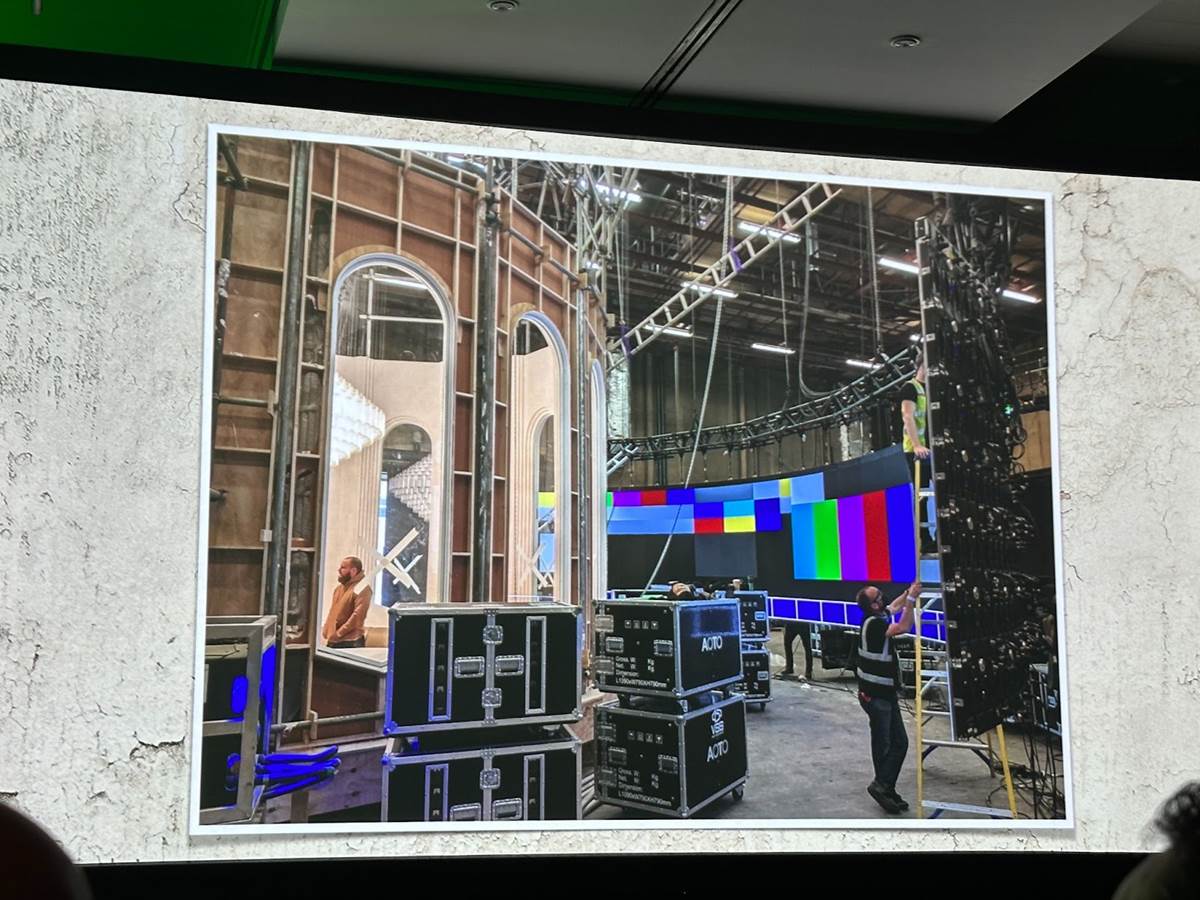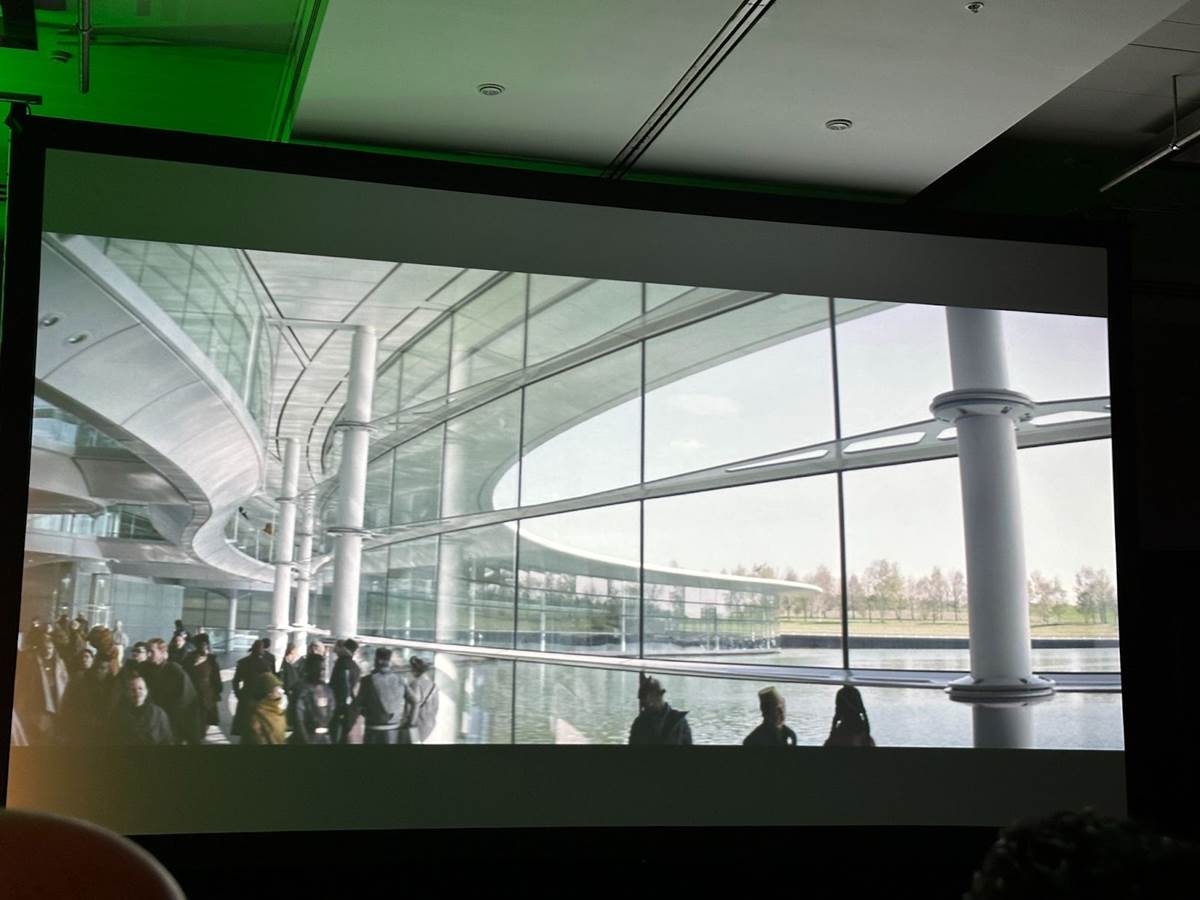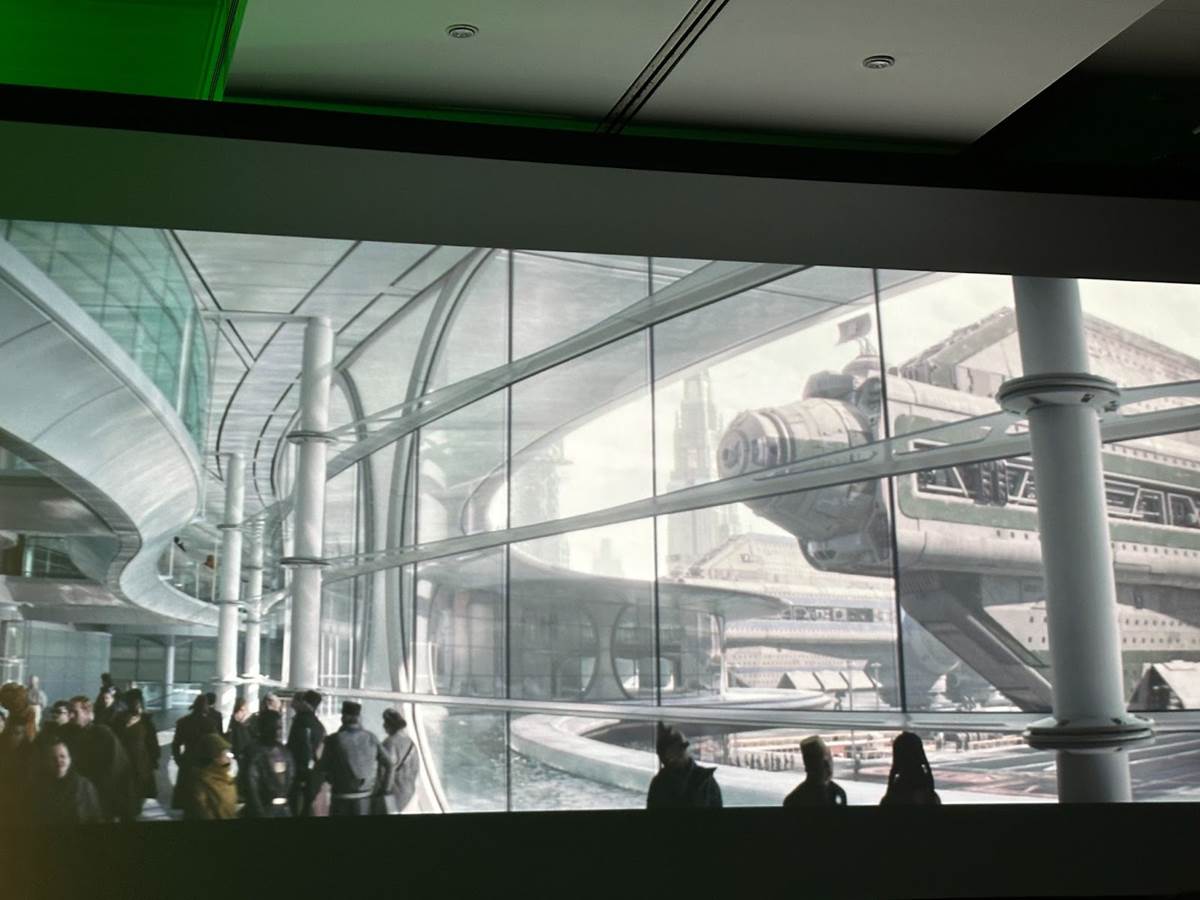Tony Gilroy once said that Andor didn’t use volumetric sets and while that’s mostly true, that claim has been debunked by a panel called “Behind the Magic: The Visual Effects of Andor” from Star Wars Celebration Europe. The volume wasn’t used the way it is on The Mandalorian, where entire sets are on a curved screen, but it was used to create Corsicant outside the windows of the Chandrilan Embassy, as well as a few space scenes from the cockpit of ships. So while it was used sparingly, the series didn’t break Lucasfilm’s streak of using the technology on every Disney+ series to date.
For ILM Visual Effects Supervisor Scott Pritchard, who oversees teams in London and Vancouver, using the volume required unlearning many practical filmmaking techniques. Thankfully, he was able to access a test wall at a West London studio as part of preparations for filming the scenes. But the volume proved to be much better than a green screen, with the lights of the city outside casting reflections in water glasses and actors' eyes. Even raindrops on the window, which are actually dollops of glycerine, we’re able to refract the light of the virtual city beyond the windows.
With Andor grounded more in reality than any other Star Wars series, incorporating Coruscant into the story presented unique challenges. Having been depicted in films and animated series, the city planet tends to be shown as an upscale, glamorous environment. The Barbican Estate in London ended up solving a lot of the creative challenges, as Visual Effects Supervisor Mohen Leo explained. Digital set extensions and overlays were applied to add Coruscant in the distance, while the real buildings have the city an esthetic that was consistent with the Andor series.
Lucasfilm Visual Effects Producer TJ Falls oversaw logistics for each shot, heavily involved in the pre-visualization phase and carrying all the way through post-production. He and Mohen Leo worked together on Rogue One and were well-versed in the style that would carry through to Andor. To help ground the series in reality, physical sets and locations were used as much as possible. TJ was part of the locations scouting team, matching up concept art with real locations that could be married together. The McLaren Technology Centre in Surrey, for example, was the location of a shipping port. The concept art didn’t have a water feature, but a lake outside of the curved windows cast water reflections onto the ceiling. Rather than remove them, the art was modified to give the terminal a water feature.
Special Effects Supervisor Richard Van Den Bergh was most responsible for safety when it came to practical effects. From blowing up a real train that would be flung down the backlot set of Ferrix to operating a giant gimbal that would shake the set during the meteor shower, Andor presented some unique challenges. The scene he is most proud of was the benefit of having a longer planning process for the series due to the pandemic. When Cassian Andor escapes from a room full of chains in the first episode, it was all practical. 379 chains were hung from the soundstage ceiling and dropped. It would’ve taken a long time to reset, so with lots of rehearsals and planning, it was done in just one take.
While nothing about bringing Star Wars to life is easy, one of my favorite parts of the panel was learning how the team can lean on the past to create new projects. A digital “boneyard” of artifacts can be pulled from, which made designing the Ferrix shipyard a lot easier. Of course, they do have to keep in mind where they are in the timeline, with Pablo Hidalgo being consulted to ensure they aren’t using a piece of a ship that isn’t of the era.
The team was tight-lipped about their work on Season 2 of Andor, but you could tell that they will have stories just as exciting as these to share at a future Star Wars Celebration event. Stay tuned for more coverage from Star Wars Celebration Europe.





